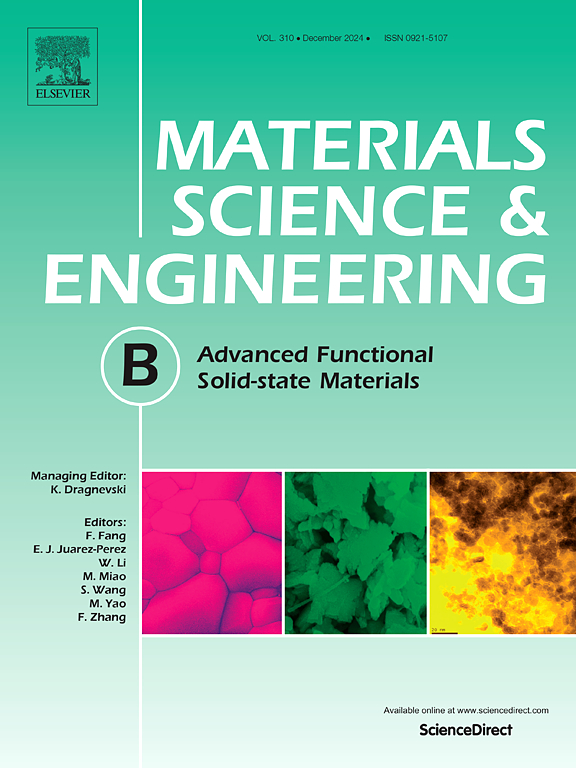Ce3+活化La2SrGa4Si2O14 langasite荧光粉的结构分析及荧光性质
IF 3.9
3区 材料科学
Q2 MATERIALS SCIENCE, MULTIDISCIPLINARY
引用次数: 0
摘要
La3Ga5SiO14是具有C、D位无序的典型电光材料(A3BC3D2O14, P321)。从理论上讲,从La3Ga5SiO14到La2SrGa4Si2O14的成分调整可以实现将无序部分从双Ga, Si位点转移到单一的La位点。本研究制备了Ce3+掺杂的同晶La2SrGa4Si2O14 (LSGS)荧光粉,其晶格比La3Ga5SiO14更紧凑有序。与La3Ga5SiO14:Ce3+相比,LSGS:Ce3+样品在395 nm左右呈现出窄紫蓝发光,量子效率更高。LSGS: 1.2% Ce3+表现出最高的荧光强度,衰减寿命低于10 ns,大的Stokes位移减少了吸收和发射波段的重叠。讨论了x射线诱导荧光反射的结构缺陷。初步评价了LSGS:Ce3+作为一种闪烁体的潜力。本文章由计算机程序翻译,如有差异,请以英文原文为准。
Structure analysis and fluorescence properties of Ce3+ activated La2SrGa4Si2O14 langasite phosphor
The La3Ga5SiO14 is a representative electro-optical material (A3BC3D2O14, P321) with disordered C and D sites. Theoretically, composition adjustment from La3Ga5SiO14 to La2SrGa4Si2O14 can achieve shifting the disordered parts from double Ga, Si sites to the sole La site. In this study, Ce3+ doped isomorphic La2SrGa4Si2O14 (LSGS) phosphors with a more compact and ordered lattice than La3Ga5SiO14 are prepared. The LSGS:Ce3+ samples show narrow purple-blue emission around 395 nm with higher quantum efficiency than that of the La3Ga5SiO14:Ce3+. The LSGS:1.2 %Ce3+ exhibits highest fluorescence intensity with decaying lifetime of sub-10 ns The large Stokes shift reduces the overlap of the absorption and emission bands. The structural defects reflected by X-ray induced fluorescence is discussed. The potential of LSGS:Ce3+ as a kind of scintillator is preliminarily evaluated.
求助全文
通过发布文献求助,成功后即可免费获取论文全文。
去求助
来源期刊

Materials Science and Engineering: B
工程技术-材料科学:综合
CiteScore
5.60
自引率
2.80%
发文量
481
审稿时长
3.5 months
期刊介绍:
The journal provides an international medium for the publication of theoretical and experimental studies and reviews related to the electronic, electrochemical, ionic, magnetic, optical, and biosensing properties of solid state materials in bulk, thin film and particulate forms. Papers dealing with synthesis, processing, characterization, structure, physical properties and computational aspects of nano-crystalline, crystalline, amorphous and glassy forms of ceramics, semiconductors, layered insertion compounds, low-dimensional compounds and systems, fast-ion conductors, polymers and dielectrics are viewed as suitable for publication. Articles focused on nano-structured aspects of these advanced solid-state materials will also be considered suitable.
 求助内容:
求助内容: 应助结果提醒方式:
应助结果提醒方式:


